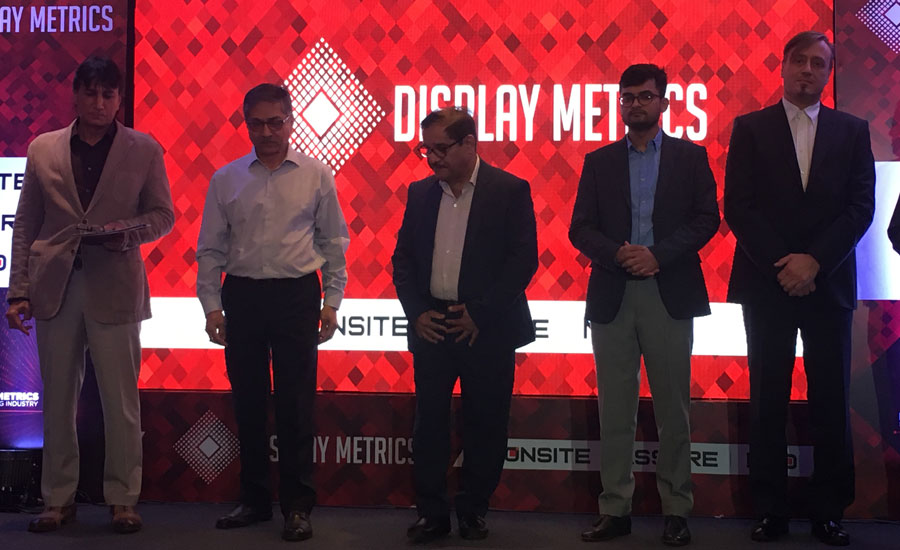Display Metrics India unveils OOH metrics development roadmap
By Rajiv Raghunath - January 18, 2019
Display Metrics has teamed up with Czech Republic-based MGE Data and the Indian arm of IPSOS to develop Metrics for Out-of-Home Displays (MOD) for the Indian OOH industry in association with IOAA
 Display Metrics India Pvt Ltd, a start-up in the business of data analytics and metrics for OOH advertising, unveiled its project roadmap to the Indian OOH leaders at a launch event held in Mumbai on January 17. Display Metrics has teamed up with Czech Republic-based MGE Data and the Indian arm of IPSOS to develop Metrics for Out-of-Home Displays (MOD) and other service offerings for the Indian OOH industry in a pact with the Indian Outdoor Advertising Association (IOAA). Display Metrics has had deep discussions with global industry councils and leading players like JCDecaux, Kinetic Worldwide, Posterscope, and UK’s Route Research for key takeaways from their own respective experiences with developing or using OOH audience metrics.
Display Metrics India Pvt Ltd, a start-up in the business of data analytics and metrics for OOH advertising, unveiled its project roadmap to the Indian OOH leaders at a launch event held in Mumbai on January 17. Display Metrics has teamed up with Czech Republic-based MGE Data and the Indian arm of IPSOS to develop Metrics for Out-of-Home Displays (MOD) and other service offerings for the Indian OOH industry in a pact with the Indian Outdoor Advertising Association (IOAA). Display Metrics has had deep discussions with global industry councils and leading players like JCDecaux, Kinetic Worldwide, Posterscope, and UK’s Route Research for key takeaways from their own respective experiences with developing or using OOH audience metrics.
At the launch event, Noomi Mehta, Chairman, IOAA said in his opening remarks that “for any medium to realise its true value, it is important to speak the same language as our customers”. The joint industry audience measurement would have a significant positive cascading impact on multi media planning, media auditing & procurement, cost (CPT), econometric modelling in relation to ROI, and aspects like media viewability and viewed impressions.
Providing an overview of the project roadmap, Indrajit Sen, who is helming the start-up business, explained during the course of his presentation that Display Metrics will be focused on:
• Mapping entire inventory data of target markets – through street by street survey, recording of the same on an app, and using GPS coordinates.
• Validation of the data.
• Weekly monitoring of displays on each site.
• Identification of brand displays on the sites, and classification of the brand displays as per categories.
• Publishing standard adex reports (through its ONSITE service offering) – the reports will be available in standard formats, while the clients may be also have customised reports. In addition they will data access.
• Establishing site monitoring (through its ASSURE service offering), with the back-end teams analysing every monitored visual real-time; in doing so they will be able to bring to the attention of site owners any issues related to the displays.
Vivek Gupta, MD, IPSOS India, spoke about the market research major’s global operations, while Jyoti Malladi, ED, IPSOS India presented the advantages that the organisation brings to the table in developing the metrics for the Indian OOH business. In what were described as the gold standard for the metrics, she said, the key elements are: classification and databasing of all the frames to be measured, measurement of vehicle and pedestrian traffic volumes, measurement of people’s journeys outside the home, integration of multiple sources of traffic and travel data into a seamless model, foundations for moving up to more granular reporting periods (by daypart, as an example), visibility estimates, campaign management system for analysing impacts, reach and frequency.
David Strnad, MD, MGE Data said that Inventory Data, Traffic Intensity Data and Travel Survey Data would form the foundation of the OOH audience research management platform. Throwing light on the method of Inventory Mapping, David explained that the objective would be to derive the Value Adjusted Impacts (VAC) of media – a multiple of probability (visibility) of a frame construction (VA%) and number of individuals who have the opportunity to see each frame (ROTS).
He also said that the Traffic Intensity will be measured by accessing a variety of tools and applications like HERE Street Maps, Travel Survey, Google Maps API, HERE Traffic patterns, HERE Trips, bus routes and timetables, etc.
Sen in his concluding remarks said the project in its first phase will cover Delhi NCR and then the Mumbai-Thane-Navi Mumbai cluster, following which the project will be expanded to cover another 8 top markets.
At the same time, initiatives will be taken to train and orient the subscribers to the service. Also, IOAA will institute financial and technical committees that will give the necessary inputs for the project.
The project will cover all roadside displays and in course of time, its coverage will be extended to other locations like inside Metro networks, malls, airports, etc.
